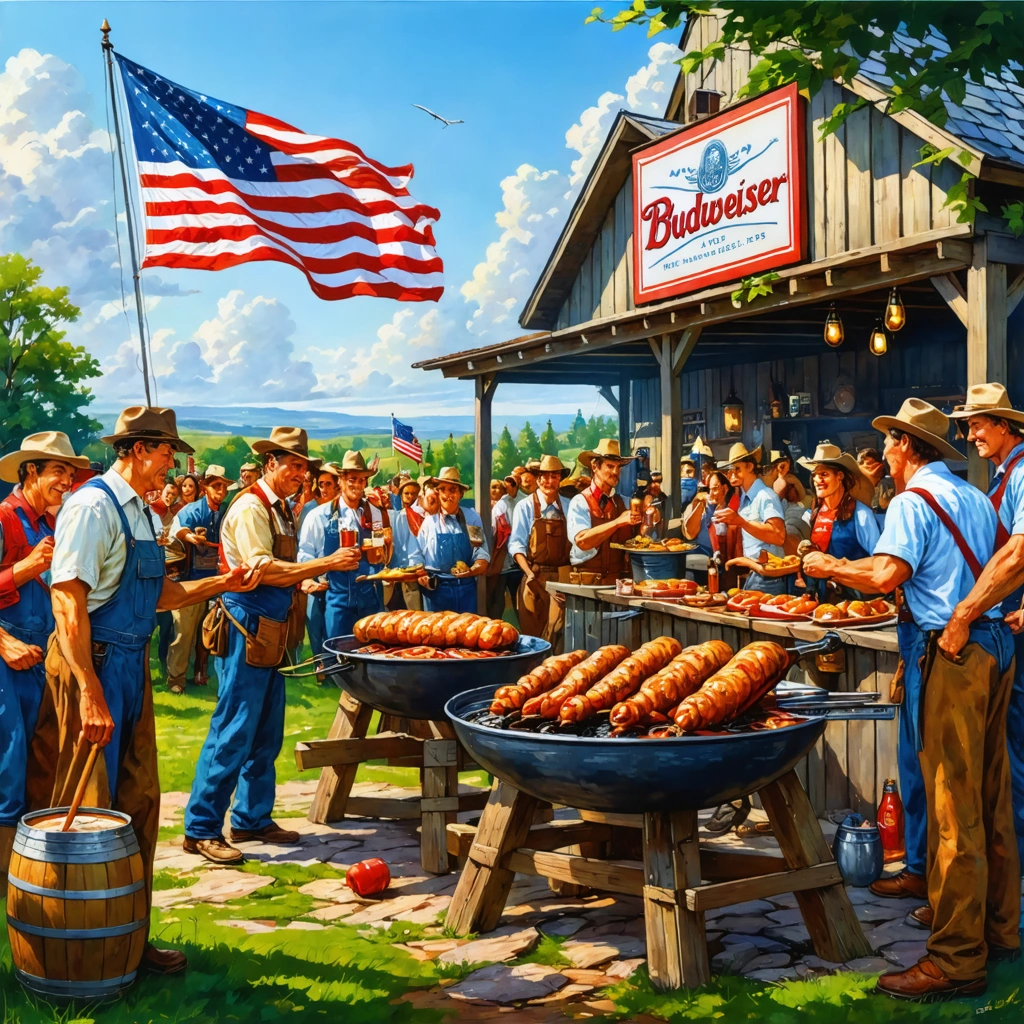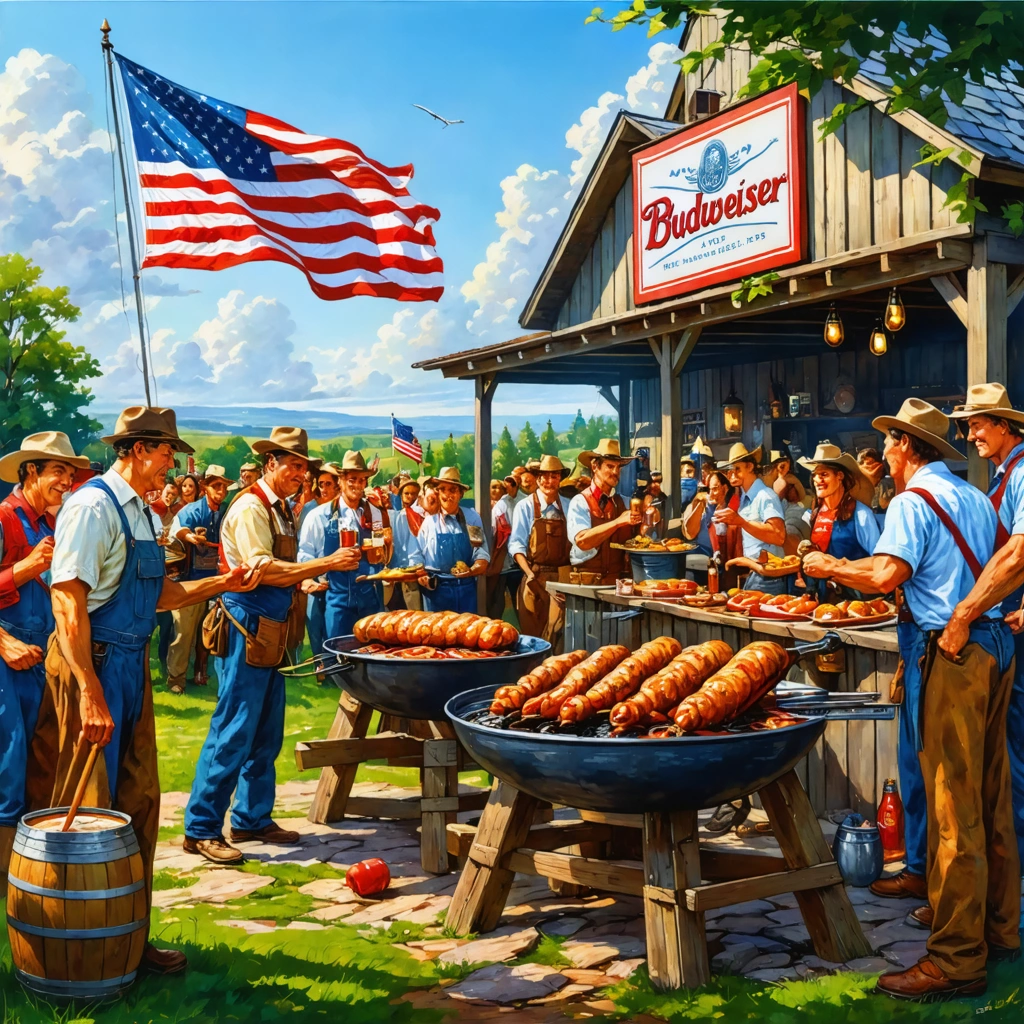The Marketing Strategy of Budweiser’s Heritage Campaigns: Budweiser’s campaigns celebrate American heritage and camaraderie through beer.

Capturing the Spirit of America: More Than Just Beer
Ever wonder why Budweiser ads don’t just focus on the product but instead feel like a warm nod to American values? That’s no accident. In a world flooded with countless beer options, consumers aren’t just looking for taste or alcohol content—they crave connection and stories that resonate with their identity. Budweiser’s heritage campaigns tap into exactly that human need by celebrating camaraderie, tradition, and the American spirit itself.
But here’s the catch: with so much noise from other brands, especially the ongoing conversation around Budweiser vs Bud Light, how does Budweiser carve out such a distinct place in people’s hearts? And what role do elements like Budweiser nutrition or the subtle nuances of their Budweiser alcohol content play in this bigger picture? The answer lies deep in their marketing strategy, which masterfully blends nostalgia with modern engagement tools—think memorable Budweiser commercials, viral Budweiser memes, and interactive Budweiser contests.
In this article, we’ll dissect how Budweiser’s heritage campaigns do more than just sell beer—they sell stories, values, and community. We’ll explore the layers behind their iconic ads, the clever ways they engage audiences, and how they maintain relevance in a crowded market. Whether you’re a marketer, a beer enthusiast, or just curious about branding genius, this deep dive will illuminate why Budweiser remains an American icon.
Why Heritage and Camaraderie Matter in Today’s Beer Landscape
Let’s face it: beer is more than a beverage; it’s part of social rituals, celebrations, and memories. Budweiser taps into this rich cultural fabric by highlighting themes like friendship, hard work, and American pride. But why has this strategy become so crucial now?
- Market Saturation and Consumer Choice: With hundreds of craft breweries and international brands competing for attention, consumers are overwhelmed. Budweiser’s heritage campaigns cut through the clutter by reminding drinkers of a shared history and common values.
- Changing Consumer Awareness: Today’s drinkers are more informed about Budweiser nutrition and Budweiser alcohol content, seeking transparency alongside tradition. Budweiser balances this by weaving factual product details into storytelling that feels authentic rather than clinical.
- Digital Age Engagement: From iconic Budweiser commercials that air during major sporting events to viral Budweiser memes circulating on social media, the brand embraces modern platforms while staying true to its roots.
- Community Building: Interactive elements like Budweiser contests engage consumers beyond the glass, fostering a sense of belonging and participation in the brand’s ongoing story.
All these factors create a fertile ground for Budweiser’s heritage campaigns to thrive, making the brand not just a choice, but a symbol.
What’s Coming Next: A Closer Look at Budweiser’s Marketing Mastery
So, how exactly do these campaigns work their magic? In the sections ahead, we’ll break down:
- How Budweiser’s commercials craft narratives that resonate deeply with American audiences
- The role of product transparency, including Budweiser alcohol content and nutrition, in building trust without diluting emotional appeal
- How Budweiser leverages social media, memes, and contests to foster community and keep the brand fresh
- A comparative glance at Budweiser vs Bud Light to understand positioning and audience targeting
By the end of this read, you’ll see why Budweiser’s heritage campaigns are more than marketing—they’re cultural touchstones that connect people through a shared love of beer and the values it represents.
Ready to dive in? Let’s raise a glass to the stories behind the label.

The Marketing Strategy of Budweiser’s Heritage Campaigns
How Does Budweiser Celebrate American Heritage and Camaraderie Through Its Campaigns?
Budweiser’s heritage campaigns are meticulously crafted to evoke a strong sense of American pride, tradition, and social connection. By positioning Budweiser as a symbol of American values, the brand taps into emotional storytelling that resonates deeply with its audience. These campaigns often depict moments of camaraderie—whether at backyard barbecues, sports events, or holiday gatherings—where beer becomes a unifying element.
The strategy leverages nostalgic imagery, patriotic themes, and narratives about friendship and community to build a cultural bond with consumers. This approach is evident in Budweiser ads and Budweiser commercials that highlight not just the product but the lifestyle and memories associated with it.
What Role Do Budweiser Ads and Commercials Play in Reinforcing Heritage?
Budweiser ads are central to communicating the brand’s heritage. These commercials often feature iconic American symbols such as the American flag, classic Americana settings, and stories centered on teamwork and loyalty. For example, Budweiser’s Super Bowl commercials frequently showcase heartfelt stories that emphasize the brand’s connection to tradition and friendship.
By using cinematic storytelling and emotional appeals, Budweiser commercials create memorable experiences that encourage brand loyalty. The consistency of these themes over time helps maintain Budweiser’s image as a heritage brand while appealing to both long-time customers and new audiences.
How Does Budweiser’s Marketing Address Product Information Like Alcohol Content and Nutrition?
In addition to heritage storytelling, Budweiser’s marketing also responsibly informs consumers about product details such as Budweiser alcohol content and Budweiser nutrition. Transparency regarding alcohol content is crucial for building trust and meeting regulatory standards. Budweiser typically markets its flagship beer as having an alcohol content around 5% ABV, which aligns with industry standards for lagers.
Nutrition information is often highlighted on packaging and digital platforms to cater to health-conscious consumers. By integrating these facts into their marketing, Budweiser ensures that its heritage campaigns are not just emotionally compelling but also informative, thereby enhancing consumer confidence.
What Is the Impact of Budweiser Contests and Memes in Their Marketing Strategy?
Budweiser contests and Budweiser memes play a vital role in engaging younger demographics and fostering community interaction online. Contests encourage participation and brand interaction, often tying into larger campaign themes of camaraderie and celebration. For instance, fan photo contests or sweepstakes related to American holidays amplify user-generated content and increase brand visibility.
Budweiser memes, often humorous or culturally relevant, help the brand stay current and relatable, especially on social media platforms. These memes can humanize the brand, making it accessible and shareable, which reinforces the communal spirit central to Budweiser’s heritage messaging.
How Does Budweiser Position Itself Against Competitors Like Bud Light?
The comparison between Budweiser vs Bud Light is significant in understanding Budweiser’s marketing focus. While Bud Light often emphasizes lightness and refreshment, appealing to consumers seeking lower-calorie options, Budweiser leans into its legacy as a full-flavored American lager with a rich heritage.
This differentiation allows Budweiser to target consumers who value tradition, authenticity, and a classic beer experience. Marketing messages emphasize craftsmanship and time-tested brewing methods, contrasting with Bud Light’s more casual, contemporary image. This strategic positioning helps Budweiser maintain its distinct identity within Anheuser-Busch’s portfolio.
Key Takeaways: What Makes Budweiser’s Heritage Campaigns Effective?
- Emotional Storytelling: Leveraging narratives that celebrate American values and social unity creates strong emotional connections.
- Consistent Brand Imagery: Use of patriotic and nostalgic visuals reinforces Budweiser’s identity as an iconic American beer.
- Product Transparency: Clear communication about Budweiser alcohol content and nutrition builds consumer trust.
- Interactive Engagement: Contests and memes foster community involvement and increase brand relevance among younger audiences.
- Strategic Positioning: Differentiating Budweiser from Bud Light ensures clarity in brand purpose and appeals to distinct consumer segments.
Conclusion
Budweiser’s marketing strategy around its heritage campaigns successfully marries tradition with modern engagement tactics. By celebrating American heritage and camaraderie through authentic storytelling, transparent product information, and interactive digital content, Budweiser maintains its status as a beloved and enduring brand. This comprehensive approach ensures that the brand not only honors its past but also remains relevant and appealing to today’s diverse consumer base.




